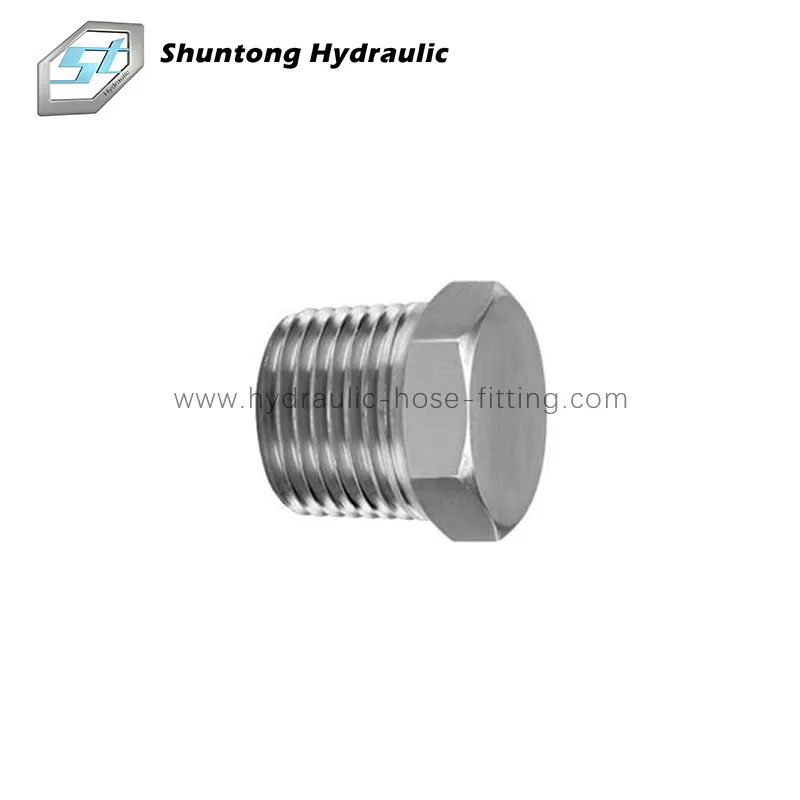Understanding NPT Male Plugs: Essential Components in Fluid and Gas Systems
2024-08-09
In the world of fluid and gas systems, the importance of reliable and secure connections cannot be overstated. Whether you're working on plumbing, industrial pipelines, or hydraulic systems, the components you choose play a crucial role in the performance and safety of your system. Among these components, the NPT male plug stands out as a vital piece that ensures proper sealing and the ability to close off a system securely.
What is an NPT Male Plug?
An NPT male plug is a threaded fitting used to seal off the end of a pipe or fitting that has a corresponding NPT female thread. NPT stands for National Pipe Thread, a standardized threading system widely used in North America for creating reliable, leak-free connections in piping systems.
The "male" designation refers to the external threading on the plug, which screws into the internal threads of a female fitting. This plug is typically used to close off an unused port or to temporarily seal a pipe for maintenance or testing purposes.
How Does an NPT Male Plug Work?
The NPT male plug operates on the principle of tapered threads. Unlike straight threads, which maintain a consistent diameter along the length of the thread, NPT threads taper towards the end, becoming narrower as they approach the tip. This tapering creates a wedging effect when the plug is tightened into a female fitting, ensuring a tight and secure seal.
Here’s how it works:
1. Tapered Threads: As the male plug is screwed into the female fitting, the tapered threads engage and compress, creating a secure, leak-proof seal.
2. Thread Sealant: To enhance the seal, a thread sealant such as Teflon tape or pipe dope is often applied to the threads. This sealant fills in any tiny gaps and adds an extra layer of protection against leaks.
3. Secure Closure: Once tightened, the NPT male plug effectively closes off the pipe or fitting, preventing the flow of fluids or gases.
Common Applications of NPT Male Plugs
NPT male plugs are versatile components used in a wide range of industries and applications:
- Plumbing: In residential and commercial plumbing, NPT male plugs are used to seal off unused pipe ends, ensuring that water, gas, or other fluids remain contained.
- Hydraulic Systems: In hydraulic systems, where fluid power is used to operate machinery, these plugs are crucial for sealing off ports and maintaining pressure within the system.
- Pneumatics: Pneumatic systems, which use compressed air or gas, rely on NPT male plugs to close off air lines and prevent leaks.
- Industrial Piping: In industrial settings, NPT male plugs are used in pipelines that carry various fluids, including chemicals, oil, and gases, providing a secure closure when a port or section of the pipe is not in use.
Choosing the Right NPT Male Plug
When selecting an NPT male plug for your project, it’s important to consider the following factors:
1. Material: NPT male plugs are available in various materials, including brass, stainless steel, plastic, and more. The material should be compatible with the fluids or gases in your system to prevent corrosion or chemical reactions. For example, stainless steel plugs are often used in corrosive environments, while brass is common in plumbing.
2. Thread Size: Ensure that the plug matches the thread size of your female fitting. NPT thread sizes are specified in inches, and common sizes range from 1/8 inch to 2 inches or more.
3. Pressure Rating: Consider the pressure rating of the plug to ensure it can withstand the operating pressures of your system. Higher pressure systems require plugs that are specifically rated to handle the load.
4. Temperature Resistance: If your system operates at extreme temperatures, choose a plug material that can withstand those conditions without degrading.
5. Sealant Use: Decide whether you need to use a thread sealant to enhance the seal. In some applications, the plug’s threads alone may suffice, but in others, a sealant is necessary for optimal performance.
Installation Tips
Proper installation of an NPT male plug is crucial to ensure a leak-free connection:
1. Clean Threads: Ensure that both the male plug and the female fitting threads are clean and free of debris. This will help the threads engage properly.
2. Apply Sealant: If needed, apply a thin layer of thread sealant or wrap Teflon tape around the threads in the direction of tightening. This helps prevent leaks and makes it easier to remove the plug later.
3. Tighten Securely: Screw the plug into the fitting by hand to start, and then use a wrench to tighten it further. Be careful not to over-tighten, as this can damage the threads or the fitting.
4. Check for Leaks: After installation, check the system for leaks by pressurizing it and inspecting the plug connection. If leaks are detected, you may need to tighten the plug further or reapply the sealant.
Conclusion
The NPT male plug may seem like a small and simple component, but it plays a crucial role in ensuring the integrity and safety of fluid and gas systems. Whether you’re working on a plumbing project, setting up a hydraulic system, or maintaining industrial pipelines, understanding how to choose and properly install an NPT male plug can make all the difference in achieving a secure, leak-free connection.
Investing in high-quality NPT male plugs that are suited to your specific application needs will help ensure that your system operates efficiently and safely, minimizing the risk of leaks and potential damage.



